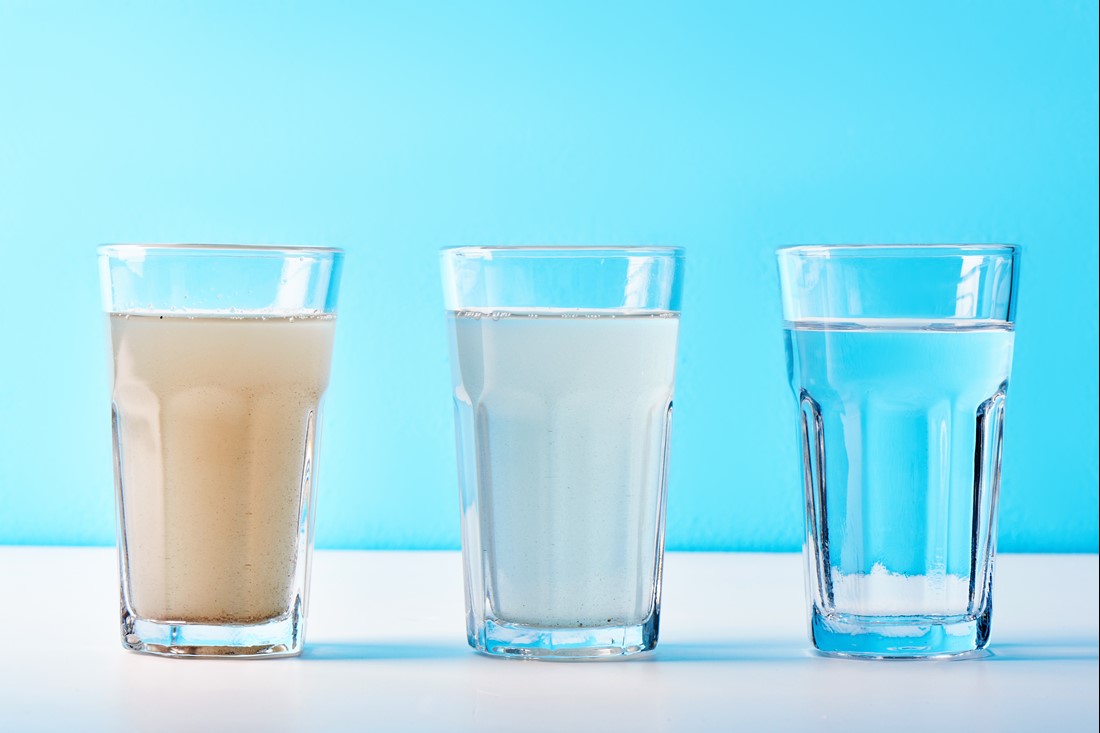Overcoming the challenges of water filtration with graphene and layered materials
Could graphene and layered materials shape the face of water filtration technology?
Graphene Flagship researchers from the National Research Council (CNR), Italy, Chalmers University of Technology, Sweden, and the University of Manchester and University College London, UK, have developed cost-effective and safe technologies to filter out contaminants from tap water, improve water-oil separation in wastewater, and prevent fouling. Membranes with graphene and other layered materials are promising for this purpose due to their tunability and efficiency, in addition their intrinsic added value for a green and circular economy.
Furthermore, researchers at Graphene Flagship partners CNR and Chalmers University of Technology reported a technique to obtain water filters made from a combination of graphene oxide (GO) and waste from the industrial production of polysulfone (PSU) membranes.1
"The advantage of our method is that it can be applied not only to commercial membranes, already produced on a large scale, but also to scraps derived from their preparation," explains Vincenzo Palermo, from Graphene Flagship partner Chalmers University of Technology.
The chemical properties and layered structure of GO enable the removal of small organic contaminants, while PSU's sponge-like matrix is already utilized in commercial micro and ultrafiltration. In this study, the unique properties of both materials were combined to create GO-coated PSU, which works as a filter and an adsorbent simultaneously.
The team tested the PSU–GO membrane with two contaminants of significant concern for the pollution of surface water bodies: a textile dye (rhodamine B) and an antibiotic (ofloxacine). The new filters captured approximately three times more rhodamine B and two times more ofloxacine than membranes made of PSU alone. Moreover, the membranes can be washed in ethanol to remove contaminants and reused.
"Given the increasing number of new chemicals introduced to the market that are used every day by people and industries, it is urgent to ensure safe drinking water, which requires new technologies," says Manuela Melucci, from Graphene Flagship partner CNR-Institute of Organic Synthesis and Photoreactivity (CNR-ISOF).

The membranes block oily components and allow water to pass through.
Above all, safety is essential in developing new materials for water purification, since no debris must leak from the membrane into the water – even after extensive use. Graphene Flagship researchers dealt with this critical issue by devising a microwave treatment. The team recirculated water through the heat-treated PSU-GO filters for 100 hours at a flow rate of two L min-1 and confirmed that no significant amounts of GO flakes were released by the composite. The researchers also submitted a patent application on the use of microwaves to graft GO onto a polymer substrate.
In another study, researchers at Graphene Flagship partners the University of Manchester and University College London, UK, made a leap forward for one of the biggest issues in membrane technologies: fouling. Several industries face fouling problems during oil–water separation because oil droplets tend to stick to membranes, clog pores and reduce flow. To improve the long term oil-repelling effect of filtering membranes, the team used a layered material derived from a natural clay mineral, known as vermiculite. Beyond oil–water separation, this technique, published in Nature Communications, could find applications in the development of self-cleaning surfaces and biofilters.2
A common solution to repel oily foulants is the use of surfaces that retain a hydration layer. The existing filters, however, fail after prolonged exposure to fouling environments. In this study, the Graphene Flagship team demonstrated that exfoliated vermiculite membranes with lithium ions have excellent fouling-resistant properties even after continuous contact with oil.
The excellent wettability of lithium-vermiculite (LiV) laminates can be visualised by splashing water onto their surface. When water lands on the laminate, it does not form round droplets, like when rain lands on glass or leaves: instead, the water spreads over the LiV surface. Taking advantage of this stable hydration layer, the team applied LiV coatings to commercial microfiltration membranes and tested them with different emulsions. Even after a week, the pre-wetted membranes blocked the oily components and allowed water to pass through with a stable flux of around 7000 L m-2 h-1 at one bar – about seven times higher than the flux of the same commercial membranes without LiV coating.
"Our next goal is to optimise the final structure of the coating and perform harsher testing, in collaboration with industrial partners. Then, scaling-up the vermiculite coating process will be relatively simple," explains Rahul Raveendran Nair, from Graphene Flagship partner University of Manchester.
"These two studies address some of our main environmental and sustainable challenges," comments Xinliang Feng, Graphene Flagship Work Package Leader for Functional Foams and Coatings. "We have also launched a new Spearhead project, GRAPHIL, dedicated to bringing water filtration technologies to the market."
Andrea C. Ferrari, Science and Technology Officer of the Graphene Flagship and Chair of its Management Panel, adds: "The Graphene Flagship is directly addressing the United Nations' Sustainable Development Goals. These studies show how graphene and related layered materials are ideally suited to developing new solutions for water filtration, biofilters and anti-fouling surfaces. These results pave the way to further industrial translation, which will be pursued during the Core 3 phase of the Graphene Flagship project."
References
- A. Kovtun, M. Zambianchi, C. Bettini, A. Liscio, M. Gazzano, F. Corticelli, E. Treossi, M.L. Navacchia, V. Palermo and M. Melucci, Graphene oxide-polysulfone filters for tap water purification, obtained by fast microwave oven treatment. Nanoscale, 11, 22780-22787 (2019).
- K. Huang, P. Rowe, C. Chi, V. Sreepal, T. Bohn, K.G. Zhou, Y. Su, E. Prestat, P.B. Pillai, C.T. Cherian, A. Michaelides and R.R. Nair. Cation-controlled wetting properties of vermiculite membranes and its promise for fouling resistant oil–water separation. Nature Communications, 11(1), 1-10 (2020).




